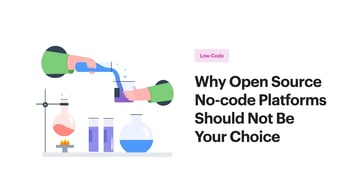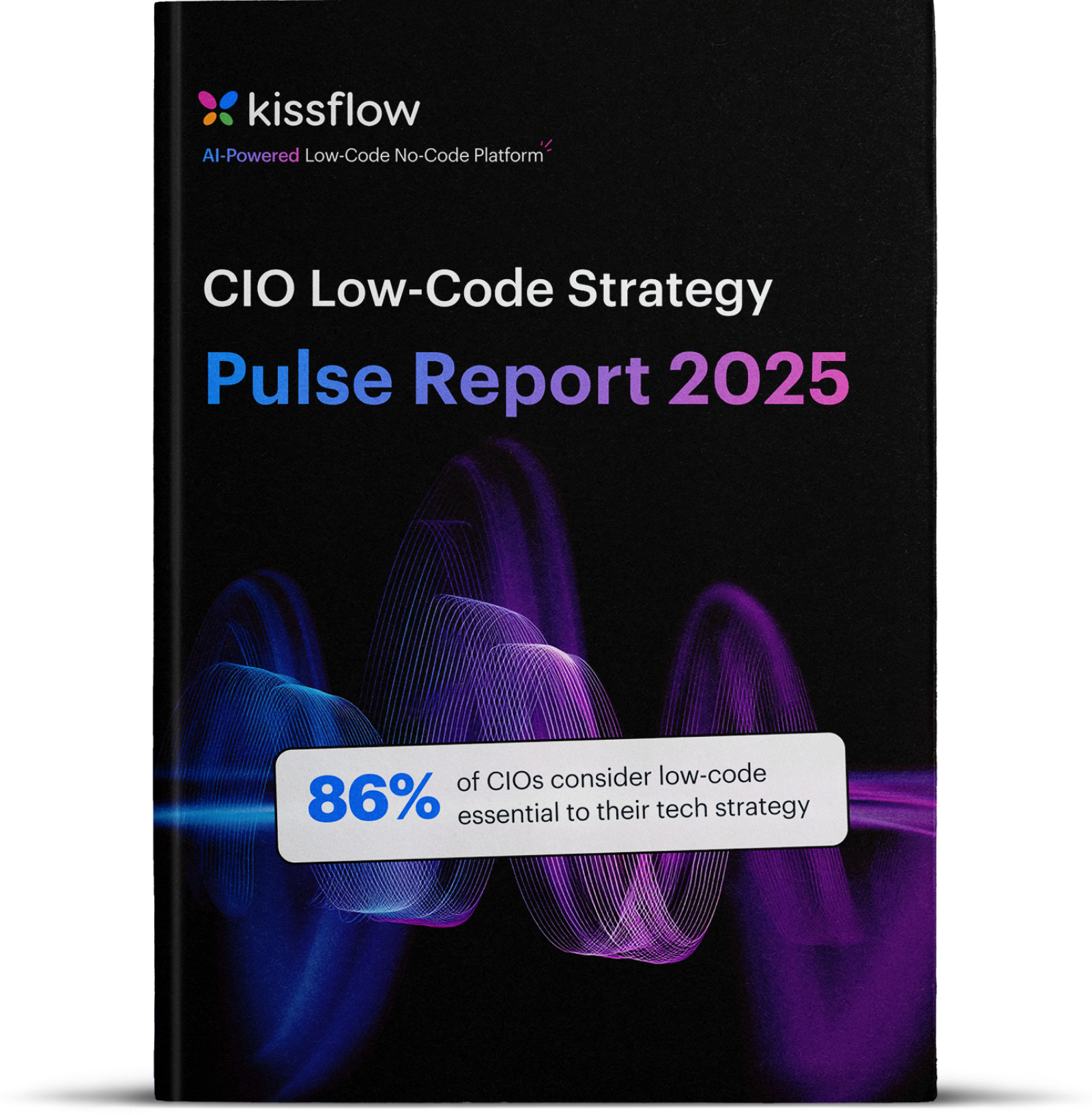
No-Code Ecosystem: Platforms, Integrations, and Community Trends
The no-code landscape has evolved from a handful of experimental tools to a comprehensive ecosystem with specialized platforms, robust integrations, active communities, and established best practices. Understanding this ecosystem helps you navigate options and make informed decisions.
Whether you're evaluating platforms, building solutions, or planning organizational adoption, knowing how the pieces fit together clarifies your path forward.
What is the no-code ecosystem?
The ecosystem comprises several distinct layers that work in tandem. At the foundation are platform vendors providing the core development environments. These range from general-purpose application builders to specialized tools for specific use cases.
Above the platforms, integration services connect different tools and systems. Platforms rarely operate in isolation. They need to communicate with other software, databases, and services. Integration platforms and APIs make this connectivity practical.
The community layer comprises educators, consultants, agencies, and practitioners who share knowledge and build capabilities. Communities develop best practices, create educational content, and provide support that helps everyone succeed.
Supporting infrastructure includes marketplaces for templates and plugins, certification programs for practitioners, and advocacy organizations promoting adoption. This infrastructure matures as the ecosystem develops.
The list of no-code platforms has expanded dramatically, offering specialized solutions for web applications, mobile apps, automation, data processing, and business workflows. This specialization lets you choose tools optimized for specific requirements rather than forcing everything into general-purpose platforms.
No code platform list overview
Web application builders like Bubble, Webflow, and Wix focus on creating internet-facing applications and websites. These platforms excel at UI design, user authentication, and delivering customer experiences. They handle hosting, security, and scaling automatically.
Mobile application platforms like Adalo and Glide specialize in native mobile experiences. They understand mobile-specific requirements like offline capability, push notifications, and device integrations. Cross-platform development lets you build once and deploy to iOS and Android.
Workflow automation platforms, such as Zapier, Make, and n8n, connect different applications and automate processes. They excel at triggering actions based on events, moving data between systems, and orchestrating multi-step sequences across tools.
Database and data management platforms like Airtable offer spreadsheet simplicity with the power of a database. They're ideal for structured data management, collaboration, and building data-centric applications quickly.
Business process platforms, such as Kissflow, focus on internal workflows, approvals, and operational processes. They handle complex multi-step processes with sophisticated business rules and governance.
Form builders, landing page creators, chatbot platforms, and specialized tools address specific needs. The breadth of options means you can usually find platforms optimized for your particular use case rather than compromising with general-purpose tools.
No code integrations ecosystem
Integration capabilities determine how well platforms work within your existing technology environment. Modern no-code platforms offer three integration approaches.
Pre-built connectors provide plug-and-play integration with popular services. Platforms maintain libraries of connectors to common business applications like Salesforce, Google Workspace, Microsoft 365, Slack, and hundreds of others. These connectors handle authentication and data mapping automatically.
API integration lets platforms connect to any service with a REST API. While requiring more technical understanding than pre-built connectors, API integration provides unlimited flexibility. You're not constrained to services the platform vendor chose to support.
Middleware and integration platforms like Zapier or Make act as universal connectors. They bridge different platforms that don't directly integrate. Build workflows that span multiple tools by routing data through integration platforms.
Webhooks enable real-time event-driven integration. When something happens in one system, webhooks instantly notify other systems. This creates responsive integrations rather than polling-based checking which introduces delays.
Database connections let platforms access external data sources directly. Connect to SQL databases, data warehouses, or analytics platforms to build applications that work with enterprise data.
No code community growth
Communities have emerged as critical ecosystem components. Platform-specific communities like Bubble's forum or Webflow's community provide support, share solutions, and create educational content. Active communities dramatically shorten learning curves for new users.
General no-code communities span platforms. NoCodeDevs, Makerpad, and others create cross-platform resources, host events, and connect practitioners. These communities share broader best practices rather than platform-specific tactics.
Agency and consultant networks provide professional services. As adoption grows, specialized service providers help organizations implement solutions, provide training, and offer ongoing support. This professional services layer accelerates enterprise adoption.
Creator communities monetize knowledge through courses, templates, and consulting. This economic activity attracts talent to the ecosystem, improving overall quality and expanding capabilities.
Open source projects contribute platforms and tools to the ecosystem. Projects like NocoDB, Appsmith, and others provide free alternatives with community development models. Open source offerings increase options and create competitive pressure that benefits users.
No-code community projects
Community projects showcase platform capabilities and serve as starting points for addressing similar needs. Many platforms showcase community-created applications, templates, and use cases. These examples inspire possibilities and accelerate development.
Educational initiatives create learning resources. Tutorial series, video courses, documentation improvements, and case studies help new users get productive quickly. Much of the best educational content comes from community members rather than platform vendors.
Advocacy work promotes the adoption and implementation of best practices. Communities develop governance frameworks, security guidelines, and implementation approaches that help organizations adopt confidently.
Tool development extends platform capabilities. Community members create plugins, components, and integrations that platform vendors haven't built. This grassroots innovation pushes platforms beyond their official capabilities.
Platform evolution trends
The ecosystem is maturing rapidly with several clear trends. AI integration is becoming standard across platforms. From AI-assisted development to intelligent features within applications, artificial intelligence is moving from experimental to essential.
Enterprise capabilities strengthen as platforms target larger organizations. Security certifications, compliance features, advanced governance, and enterprise support distinguish mature platforms from tools suitable only for simple use cases.
Platform consolidation seems inevitable as the market matures. Smaller platforms get acquired, others merge, and leaders emerge in each category. This consolidation will simplify platform selection, but it may also reduce innovation.
Vertical specialization increases as platforms target specific industries. Healthcare, financial services, real estate, and other verticals get purpose-built platforms that understand industry requirements and regulations.
Pricing models evolve toward usage-based structures. Rather than flat subscriptions, platforms increasingly charge based on active users, transaction volumes, or compute consumption. This aligns costs with actual usage.
How Kissflow helps
Kissflow operates within this ecosystem as a specialized platform for business process automation and workflow management. Rather than trying to be everything to everyone, Kissflow focuses deeply on what organizations need for internal operations and business processes.
The platform integrates naturally with the broader ecosystem. Connect to productivity tools, data sources, and communication platforms your organization already uses. Kissflow complements existing technology rather than replacing it.
For organizations building their no-code strategy, Kissflow provides a stable, enterprise-ready foundation for workflow automation, allowing you to evaluate other platforms for different use cases. You're not betting everything on one platform. You're assembling the right combination of tools for different needs.
The community around Kissflow comprises consultants, implementation partners, and user groups that share best practices for specific industries and use cases. This community accelerates your learning and helps you avoid common pitfalls.
FAQs:
1. How do different no-code tools fit into a full enterprise ecosystem?
Process-focused platforms handle human-centric workflows like approvals and task management. Data-focused tools provide database management and reporting capabilities. Integration platforms connect disparate systems and automate data flow between applications. Industry-specific solutions address vertical requirements like healthcare or financial services. Low-code platforms offer more technical flexibility for complex enterprise applications. Collaboration tools enhance communication and project management workflows. A comprehensive ecosystem allows organizations to choose specialized tools while maintaining interoperability. Unified platforms like Kissflow provide multiple capabilities in a single environment to reduce complexity.
2. What integration options should enterprises look for?
Native connectors to major enterprise systems like Salesforce, SAP, Microsoft 365, and Google Workspace. RESTful API support for custom integrations with internal and third-party systems. Webhook capabilities for real-time event-driven integration scenarios. iPaaS (integration platform as a service) compatibility for complex enterprise integration patterns. Data sync capabilities to keep information current across multiple systems. Single sign-on (SSO) integration with enterprise identity providers. File storage integration with platforms like SharePoint, Google Drive, and Box. Database connectivity options for reading and writing to corporate databases.
3. How important is community support for long-term platform success?
Active communities provide peer assistance, reducing dependency on vendor support for routine questions. Shared templates, components, and best practices accelerate development and prevent reinventing solutions. Community-driven innovation often leads to new use cases and creative problem-solving approaches. Platform adoption increases when users can learn from peers' experiences and solutions. Vendor responsiveness to community feedback indicates commitment to customer success. Vibrant communities suggest healthy platform adoption and longevity. However, enterprise support SLAs remain essential for business-critical applications regardless of community strength.
4. What trends will shape the no-code ecosystem in the next 5 years?
AI-powered development assistance will automate significant portions of application creation. Natural language interfaces will allow users to describe desired functionality in plain English. Advanced data analytics and ML integration will become standard platform capabilities. Mobile-first development will be the default rather than an afterthought. Hyperautomation combining RPA, no-code, and AI will enable end-to-end process automation. Industry-specific solutions and vertical platforms will proliferate for specialized requirements. Edge computing integration for IoT and distributed architectures. Increased focus on sustainability and ethical AI in platform development.
5. How do AI-driven integrations change the ecosystem?
AI can automatically suggest relevant integrations based on application context and user behavior. Natural language processing enables users to describe integration needs without technical specifications. Intelligent data mapping reduces manual configuration when connecting different systems. Anomaly detection in integration patterns helps identify and prevent issues. AI-powered transformation logic adapts data formats between systems automatically. Predictive analytics anticipate integration needs based on business patterns. Self-healing integrations can detect and correct common connection issues. However, complex business logic and security requirements still need human oversight.
Navigate the no-code ecosystem strategically with platforms purpose-built for your specific needs.
Related Topics:
Related Articles











